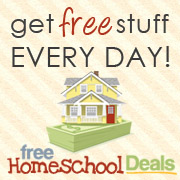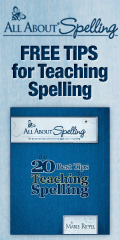This is a post from Kirsten Joy Torrado.
Every parent teaches their child how to read. You taught them their ABC’s, read to them their first nursery rhymes, and before you knew it, they could tell you the whole alphabet.
Whether you realize it or not, you are your child’s first and best teacher, and just because they go to school doesn’t mean it stops there. Whether it’s homework, summer reading, or year round homeschooling, you are still the one who is cheering them on in their successes, most aware of their difficulties, and trying to find a way to progress them to the next level even though it may feel like unfamiliar waters.
Teaching my children at home has definitely pushed me into unfamiliar waters and made me search for the best ways to teach my children how to read confidently. Along the way, I’ve found several strategies that work well and I want to share with you five ways to raise a confident reader.

This post contains my referral link which helps support the work of this site. Here’s my full disclosure policy.
Read one picture book a day (or one chapter from a chapter book a day) even through the summer months.
Portions of reading skills are perishable. If you don’t use what you’ve learned it can be lost, so we read together frequently.
More specifically, they read out loud to me. I can make sure that they are continuing to build their vocabulary and I can help them through the words that are difficult to decode.
Be a reader yourself.
As a parent, I also have to sharpen my own skills so that I know how to progress my child to the next level of their development. When they were babies I consumed hoards of baby books and magazines: Babywise, What to Expect the First Year, Parenting, and American Baby Magazines. You name it. I wanted to know for sure that I was able to identify what level they were at and progress them to the next stage successfully.
Teaching them to read is no different. However, the information you need to know is not as readily available as the mass market for the 0-3 age group. You have to look for it a little bit, but it’s there.
Today I want to share one of the best resources I’ve found: The Three R’s by Ruth Beechick.
The Three R’s is a gold mine resource for parents who are looking to work with their kids on the basics of reading, writing, and math at home. It will walk you through the four stages of reading and also help you identify which level your child’s current level. Yes, it’s a little book packed with lots of good information…which also leads me to the third tip for raising confident readers.
Know your child’s reading level.
The stages of reading can be grouped into 4 levels: Pre-reading, Beginning Reading, Decoding, and Fluency. Pinpointing your child’s current reading level allows you to form a strategy for progressing them to the next level.
Pre-Reading and Beginning reading focus on letter recognition and phonemic awareness (the sounds that letters make). Most children focus on pre-reading skills at ages 3-5.
Decoding focuses on blends and digraphs (putting the sounds of letters together). Most children focus on decoding beginning in Kindergarten.
Fluency can be achieved by second or third grade for parents who read frequently with their children. At this stage your child will most likely be able to read beginner books on their own (with you there to help them over the tough words).
Know how to choose a good book for your child.
For fluent readers, I want to share with you a quick trick to know whether a book is an appropriate choice. You can make great selections at the library simply by pulling a book off the shelf and following this general technique:
1) Have your child read one page of the book (about 100 words) out loud. If they miss 0-2 words it is a good book for them to read independently.
2) If they miss 3-5 words it’s a good book to read with them for instructional or assigned reading.
3) If they miss over 5 words on any particular page, it is probably to advanced and it is better to keep the book for a later time so as to avoid frustration.
I love having concrete information to help make decisions. If you follow this technique, you’re sure to choose a book at just the right level.
Read aloud to your child.
Reading stories to your child is a sure way to develop a love of books. Most parents think that you have to stop reading out loud to your child as soon as they outgrow picture books, but this is certainly not the case.
The trick is to choose a book that is a level or two above their current reading level and read a chapter at a time.
When my oldest was in first grade we read The Magic Treehouse books aloud. When he was in second grade I read Charlotte’s Web and Ralph S. Mouse. You can continue on even through late elementary years and your children will not grow tired of it. Who doesn’t love a good story? It’s also a great way to introduce them to a new series or whet their appetites for the next level.
Right around fourth grade there is a real transition in the breadth of vocabulary that is used in writing. It can really stump a fourth grader. In fact, there’s actually a name that teachers use for it: The Fourth Grade Slump. When it occurs, reading suddenly becomes too hard, or children lose interest in books altogether.
But, if you are reading aloud to them, children are absorbing new vocabulary audibly long before they have to tackle those tough words on their own. It should make the transition to higher reading levels much smoother.
Of course, the benefit to home education is that you can progress your child through to fluency as quickly or as slowly as you need to in order to help them become a proficient reader. But, you don’t need to be a homeschooler to help your child learn to read. All it takes is a willingness to be present and patient.
I hope these tips help you on your journey and you find lots of good books to enjoy with your kiddos. Before long you’ll find yourselves with favorite quotes and beloved characters, soaring into stories that will build memories for years to come.
Have fun reading!
Read more featured articles at Free Homeschool Deals!
Latest posts by Free Homeschool Deals (see all)
- Saxon Math 3 Resources - March 31, 2025
- Wonderings eZine - February 27, 2025
- All About Me Coloring Page Bundle - February 24, 2025
- FREE Valentine’s Day Printables, STEM Activities, & Experiments! - February 4, 2025
- Top 10 STEM/STEAM Activities for the Winter Months! - December 2, 2024






